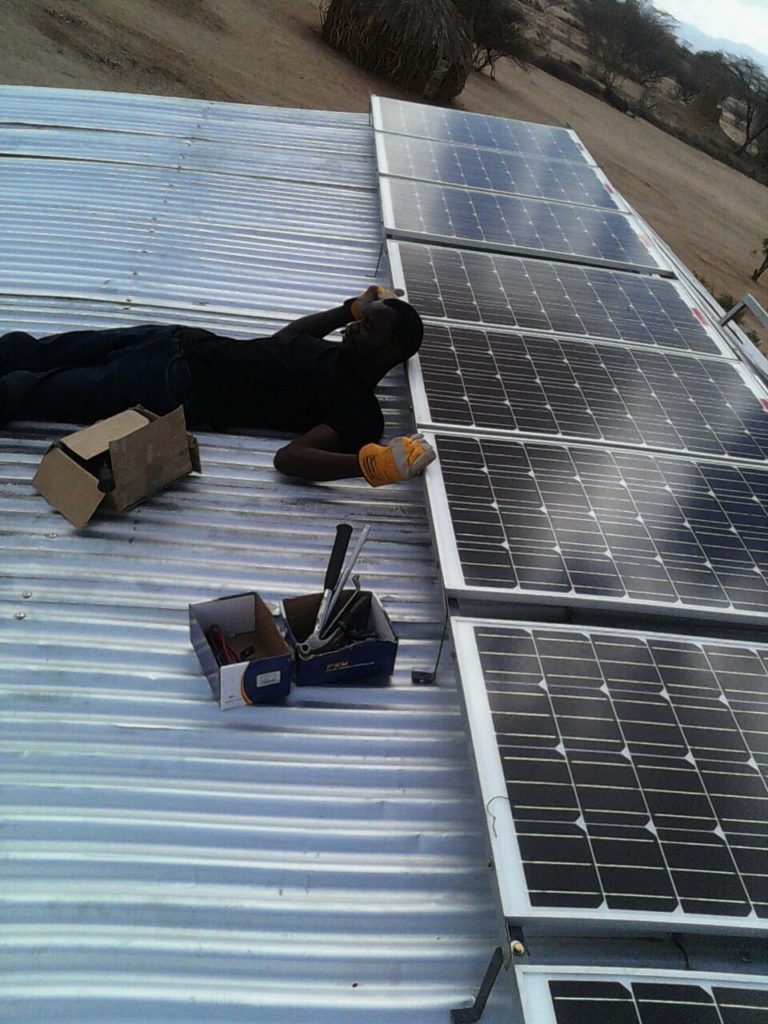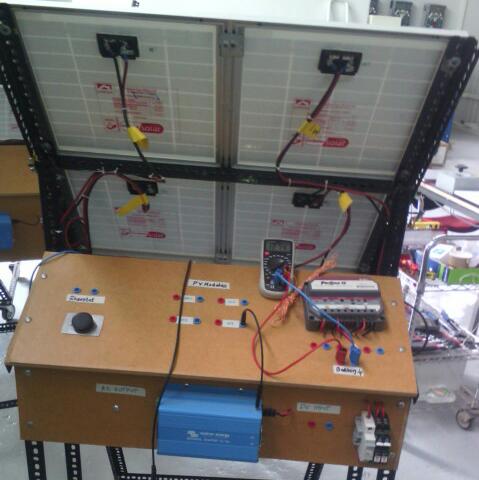|
Getting your Trinity Audio player ready...
|
By Fred Deya
Electricity outreach for Kenya’s rural homes has been a challenging factor since the project was launched some years ago.
However, the outrage of that phenomenon could be curbed through the introduction and adoption of renewable energy; that is solar and wind in many rural homes in the country which has for many occasions been curbed by the lack of access to clean energy by low income folks.
Usao mixed Secondary school; a community established learning institute in Kenya’s Suba District has become a centre and source of light and energy for a radius of Usao community in Suba through installation of solar panels.
The house roofed panels at the school have the capacity provide energy that lights the entire school, hence improving learning standards.
The 150W and 300W solar panels installed at Usao mixed secondary is a revolutionary project in the interior area of Suba, which has for a long time never had access to a source of clean energy.
The energy generated by five solar panels which are connected to 150 AH and 12 AH storage solar batteries play significant role than never before. The generated energy is used to light all classrooms, staff quarters, offices and connected to power saving bulbs, provide security within the school compound and its environs.
Since the school is community based, the residents around the school are beneficiaries too. These folks have got access to the energy centre whereby they charge their mobile phones at lower or no charge.

“We have been for decade in a slumber to access clean energy in this area even though electric poles are seen around, a non-guarantee of clean energy access.
Since the establishment of this small solar project in this school, a lot of changes have been witnessed by parents, student and even entire school fraternity”, said Mr. O. Otieno, an area resident and a parent at Usao Mixed secondary.
Otieno acknowledged the positive impact of the established solar project at the junior school. He added that his child’s performance has improved because the student has got an ample time to study at school because the power at school is efficient and reliable, giving a conducive learning environment unlike when his child could only rely on a smock, wick lamp.
“The lucrative idea of installation solar at this school was a combined idea between parents and the school management for a better and improved learning ecosystem for our present and future students”, said Mr. Clement Obare, the school principal.
Obare said that the solar panels at the school are capable of lighting the entire school for a period of a constant eight hours. Therefore, the stored energy is majorly used at night for lighting, but during day time it is used for light duties like phone charging which consumes little power.
The school head acknowledged the improvement of learning environment and performance just because of the installed solar power within the school saying, “Our school has for a long time treaded in darkness with unpleasant and non- conducive learning arena but now we are sort of relieved even though more solar panels ought to be added to boost power generation”. He added that before the solar project was initiated the school used kerosene, pressure lantern which was not that reliable in a learning institution. The lamp could be easily be blown off by wind amid studying process at night. He also said that purchasing of kerosene in a daily basis was much expensive.

Usao mixed secondary school Management together with parents came into terms and procured five solar panels from Hypertech Elecrical Service LTD, a Nairobi based solar manufacturing and Installation Company. The company agreed to install the solar panels at the school premises at a cost of 675000 ksh ($ 7 337).
Erick Otieno Akoko, Solar PV technician at HyperTech Electrical LTD advised on the installation of solar energy within rural schools and home due to its reliability and less cost. He said that the outreach of rural electrification in Kenya’s rural is still a pipedream.
“The reality on ground is that the installation of on-grid electricity is much expensive for low income village dwellers. However, village inhabitants should adopt the use of solar energy which is cheap, efficient and reliable which can be afforded by anyone”.
According to Kenya National Bureau of Statistics (KNBS), by the year 2000 Kenya’s electrification rates was resting below the Sub-Saharan Africa (SSA) average of 14 percent overall connection with a breakdown of only 14 percent rural access.
The source says that all these dilemmas have been brought about by lack of finance for capital and operating cost for generation, transmission and distribution of electricity.















